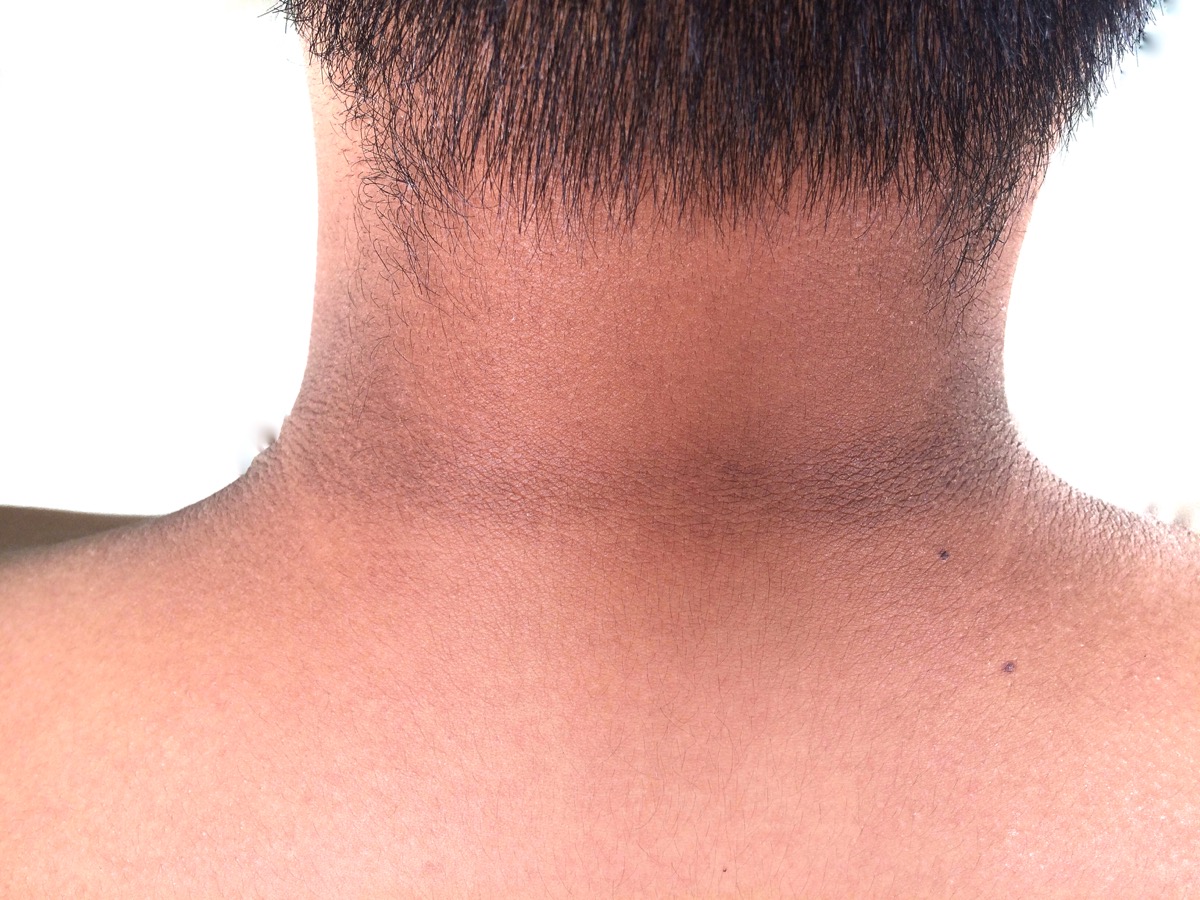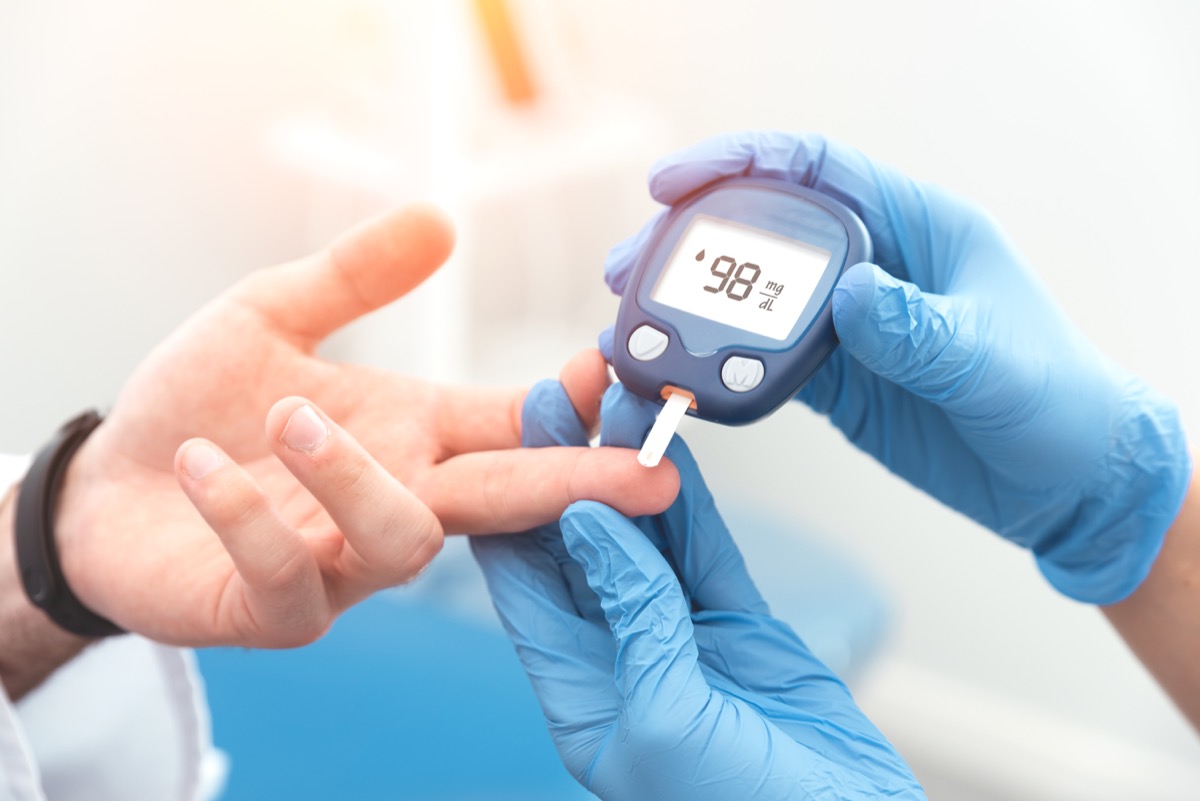Approximately 34.2 million U.S. residents have diabetes— and nearly one-quarter of those affected by the condition don’t even realize they have it, according to the Centers for Disease Control and Prevention (CDC). And without the benefit of early diagnosis—and by extension, treatment and lifestyle intervention—many patients go on to develop severe symptoms. Experts say the sooner you get help, the sooner you can get your blood sugar levels under control, thereby minimizing your chances of the worst outcomes of the disease. “Early detection of diabetes is proven to prevent life-altering complications like stroke, vision impairment, and kidney disease,” according to the American Diabetes Association.
That’s exactly why it’s so essential to learn the few signs that do tend to present in the earliest stages of diabetes and pre-diabetes. In particular, experts say there’s one symptom you may notice on your skin—and if you do, it’s time to get your blood sugar levels checked immediately. Read on to learn which skin symptom is a major red flag.
RELATED: If You Notice This on Your Legs, Get Checked for Diabetes Now, Experts Say.


Due to elevated blood sugar levels, which affect your blood vessels and nerves, skin conditions are common among people with diabetes. In particular, experts say that many diabetics develop a condition known as acanthosis nigricans (AN), which frequently manifests as a dark band of velvety skin most frequently located on the back of the neck.
In many patients, AN can be found in other areas of the body where the skin folds, such as the hands, armpits, or groin. In addition to the noticeable discoloration associated with the condition, some people report that skin affected by AN feels thicker. “The skin changes usually appear slowly. The affected skin may also have an odor or itch,” notes the Mayo Clinic.
RELATED: If You Notice This in the Bathroom, It Could Be the First Sign of Diabetes.


Acanthosis nigricans is considered an especially important symptom to recognize because it tends to appear early on in the disease. According to the American Academy of Dermatology Association (AAD), “AN may be the first sign that someone has diabetes.”
The symptom is also known to appear in individuals who have pre-diabetes, making it one of the only visible symptoms of the illness. Experts say that this presents a rare opportunity to change the course of a person’s illness before it progresses. “Making lifestyle changes before diabetes develops can prevent diabetes,” say AAD experts.


As the Mayo Clinic points out, diabetes is the most common cause of AN, but it’s not the only reason the condition may appear. In some cases, the skin condition is caused by hormonal disorders, especially in people with an underactive thyroid, adrenal gland problems, or ovarian cysts. Medication and certain supplements can also be to blame—particularly certain birth control pills, prednisone, and other corticosteroids. In rare cases, AN is associated with lymphoma and cancers of the stomach, colon, and liver.
“Other times, these dark patches have no connection to any medical condition. A dermatologist can help you find out what’s causing your discolored skin,” says the AAD.
For more health news sent directly to your inbox, sign up for our daily newsletter.


Recognizing the other symptoms associated with diabetes may help you get the medical care you need sooner. In addition to the skin changes associated with AN, the CDC says that if you have a frequent need to urinate, unintended weight loss, vision problems, dry skin or sores that will not heal, recurring infections, increased hunger, excessive thirst, tingling or numbness in the hands or feet, or persistent fatigue, you should have your blood sugar levels checked by a medical professional as soon as possible.
RELATED: If You See This on Your Nails, It Could Be a Tell-Tale Sign of Diabetes.